Why Cats’ Whiskers Fall Out, and Whether Felines Can Live Without Them
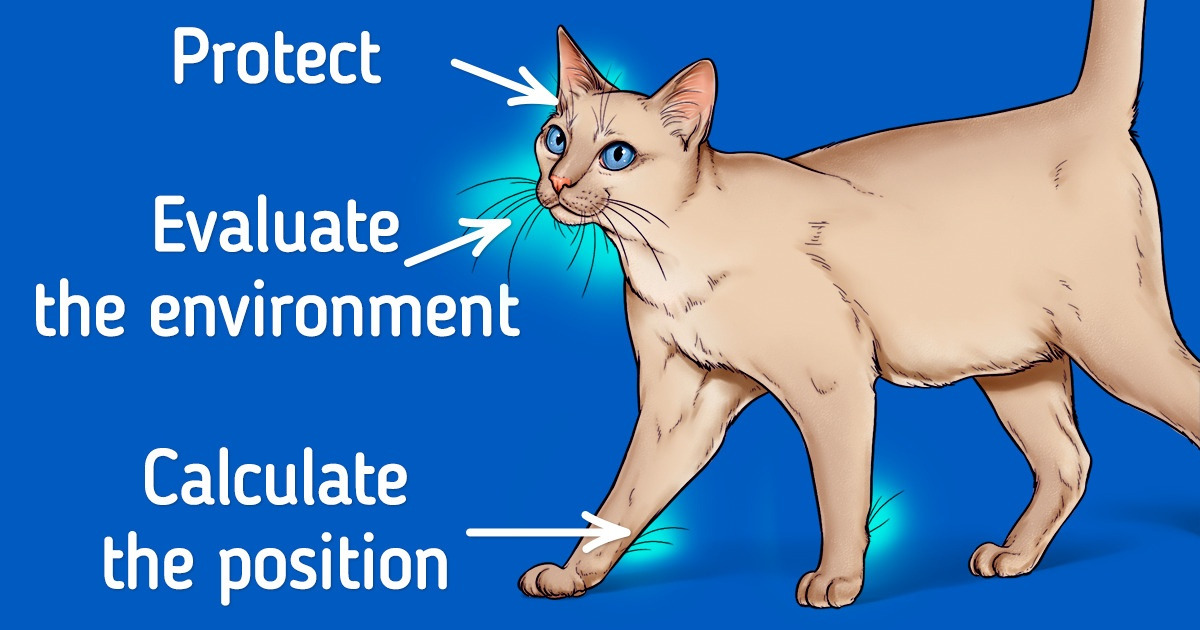
Perhaps cat owners have come across a thick hair resembling a fishing line in their homes at least once. And when they realized it was a whisker from their loveable pet, they likely started to panic. This is because we all are aware that whiskers are an important attribute for cats, and it frightens their owners when they see those whiskers fall out.
5-Minute Crafts is telling you why cats’ whiskers fall out and whether they can live without them at all.
What cats’ whiskers are
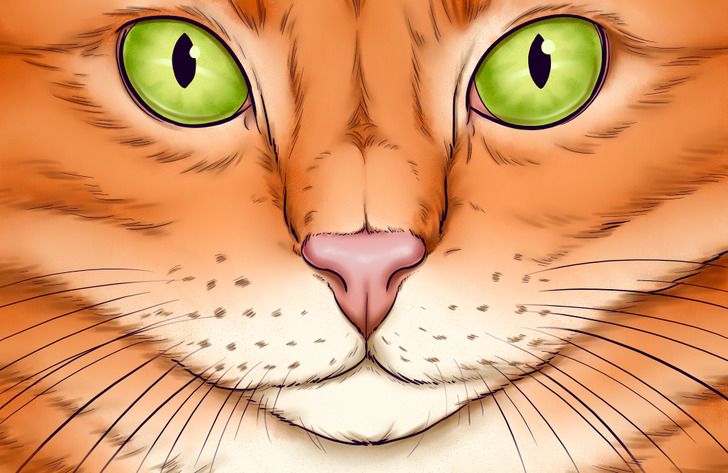
“Vibrissae” is the official name of your cat’s whiskers. It comes from the Latin word, “vibrio,” which means “vibrate.”
Whiskers are a special type of hair — they are long, thick, and stiff. Cats’ whiskers grow into the skin 3 times deeper than regular hair, and their follicles are filled with nerve endings. The hairs of these whiskers consist of keratin, just like in humans, and that’s why they have no feeling. At the same time, each follicle of cats’ whiskers can be connected with 100-200 neurons.
Whiskers help felines interact with the outside world and perform important functions.
The functions of whiskers
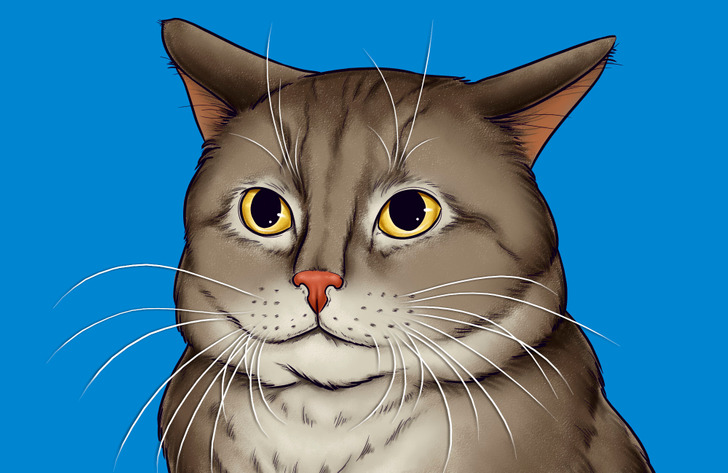
- Sense of touch
This is the main function of felines’ whiskers. The follicles that whiskers grow from are surrounded by sensory cells. These cells transmit tactile information similar to the signals our fingertips send to our brains. Even barely noticeable fluctuations in the fur don’t go unnoticed by these sensory cells. Thanks to this, cats feel not only the objects they come into contact with but also the air currents from any movements nearby.
Whiskers help cats:
- Evaluate the environment.
- Avoid potential threats to the eyes and muzzle, like from branches or insects
- Hunt better at night
- Understand whether they will be able to fit into narrow spaces
- Navigation
There is a sensory organ on the ends of cats’ whiskers called a proprioceptor. It sends important messages to the animal’s brain. Proprioceptors “tell” a cat about the position of its body. It’s this, together with felines’ sharp vision, that helps your cat make those precise leaps and jumps. - Communication
It is believed that with the help of whiskers, a cat can communicate with other cats and even with people. Tiny muscles located at the base of the whiskers allow stressed cats to point their whiskers in the direction of a potential threat and relax them when the animals are calm and content. A cat that doesn’t feel well may pull its whiskers back against its muzzle in a grimace.
Where cats have whiskers
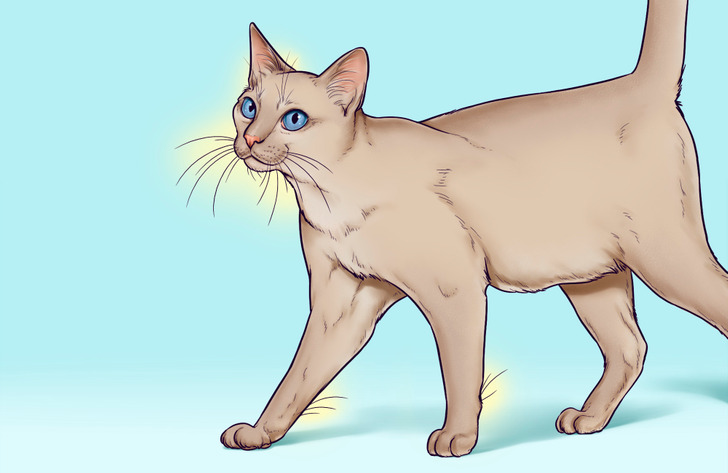
Cats’ whiskers grow in certain places:
- Over the upper lip
This is where the whiskers are most noticeable. They grow in several rows of 4-5 whiskers each. Shorter whiskers are located in the front, and longer ones, in the back. Most cats have about 12 whiskers on each upper lip. - Over the eyes
Many cats have 3 whiskers over each eye. These hairs protect their eyes. If dust or debris gets on those whiskers, the cat closes its eyes and shakes its head. - On the chin
Normally, cats have several short whiskers in the area of their chin. - On their paws
Many cats have several whiskers on the back part of their front paws. Cats see better from afar, so these whiskers help them compensate for poor near vision. It is these whiskers that help felines feel the exact position of their prey.
If whiskers should fall out
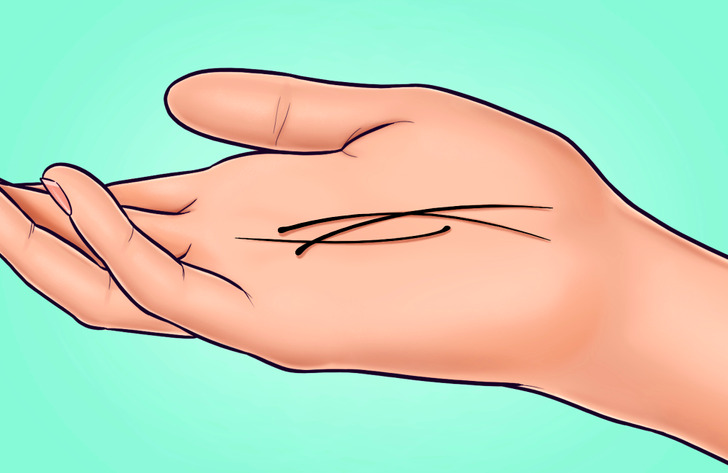
If a cat accidentally breaks its whiskers, they will grow back again if the follicle isn’t damaged. Just like other hair, whiskers fall out and it’s absolutely normal. No more than 2 whiskers should fall out at a time.
It might take anywhere from 6 weeks to 3 months for new whiskers to grow to the necessary length and start performing their functions. Some cats’ white whiskers might get dark or become light. It is also normal — the change in color doesn’t affect whiskers’ functions.
Reasons for losing whiskers
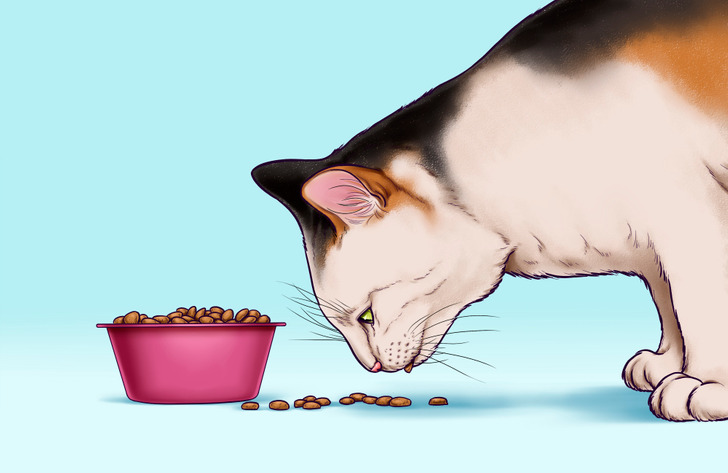
- Allergies can provoke strong skin itching. While trying to relieve irritation, a cat sometimes will rub its muzzle against various objects or scratch it with its paws. This can lead to broken whiskers. The hairs lost this way will grow back as soon as the issue is solved.
- Some medications can provoke the falling out of whiskers. You should consult with a specialist on this matter.
- Bacterial, fungal, or parasitic skin infections can cause hair loss in cats. If the infection develops in the area where the whiskers grow, they may fall out along with other hair. These diseases can also cause severe itching, and, just like in the case of allergies, whiskers sometimes fall out due to friction. With skin infections, hair loss goes along with skin peeling and inflammation, as well as the formation of crust. Lost hairs should grow back once the infection is cured.
- “Whisker fatigue” can cause constant pressure on the whiskers and the firing of the neurons that make that cat feel overstimulated. Bowls of the wrong size might be the reason for this condition. If your cat doesn’t like to eat out of its bowl or shovels the contents onto the floor, consult with the vet. You may need to buy a different bowl size to protect your pet’s sensitive whiskers.
- Cat acne is caused by the overactivity of the sebaceous glands, most of which are associated with hair follicles. These glands are responsible for the production of sebum, which makes the fur waterproof, maintains the elasticity of the skin, and plays a role in scent marking. There are many sebaceous glands on the chin and lips of a cat, which is why animals rub their muzzle against various objects, marking them with their smell so often. Excessive production of sebum can cause the sebaceous glands to become blocked. And this, in turn, will lead to comedones. Whiskers and hair that have fallen out due to acne will grow back as soon as the issue is resolved.
- A cat might lose its whiskers as a result of various traumas, like the following.
- A fight: A cat’s whiskers might break during a tussle with another animal. This often happens to cats who walk outside.
- Games: House cats can damage their whiskers during active play.
- Fire: A cat might lose its whiskers if it comes into contact with fire, a stove, or another source of heat, and its whiskers will get burned. Burned whiskers usually have a curled appearance.
If your cat didn’t get injured during these situations, there is nothing to worry about — its whiskers will grow back again.
How a cat can live without whiskers
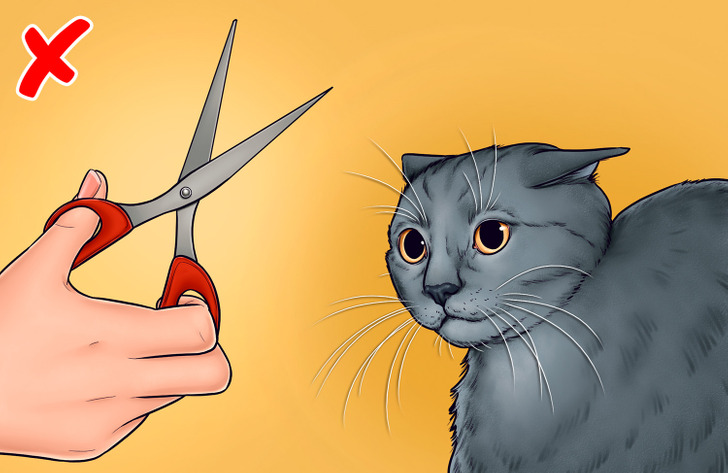
Some people wonder whether felines’ whiskers can be cut. Nerves are associated with follicles and not the hair itself, which is why cutting their whiskers won’t bring any pain to your cat, but this is something that shouldn’t be done. Even house cats use the sensory information from their whiskers daily and their sudden loss might be very stressful to them.
A cat will be disoriented without whiskers, it will be hard for it to navigate around its space. A cat that loses its whiskers can be compared to blindfolding a human — having lost their vision suddenly, they won’t be able to understand where they are located and what is happening around them.
As we’ve mentioned, along with the whiskers, the cat will lose their sensory functions, and this can lead to injury. For example, the animal won’t understand if it can squeeze into a narrow space, or if it won’t be able to land correctly after making a jump.